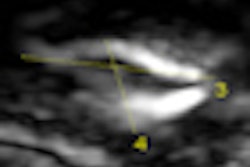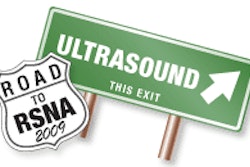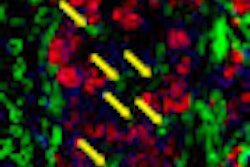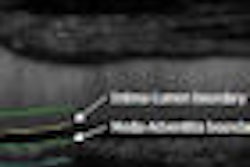Radiologists with experience reading contrast-enhanced ultrasound (CEUS) images have the upper hand over neophytes in characterizing malignant liver tumors, according to research published in the January issue of the Journal of Ultrasound in Medicine.
In a study comparing three experienced CEUS observers with two to 10 years of experience to three inexperienced readers, an Italian research team found that the veterans turned in a significantly higher diagnostic performance in finding malignant lesions (J Ultrasound Med, January 2010, Vol. 29:1, pp. 25-36).
Although CEUS has been shown to offer value in characterizing liver tumors, interpreting these images can be challenging. Tumor enhancement patterns during the hepatic arterial phase of contrast enhancement can offer important clues to a lesion's nature, but it's essential to evaluate the degree of tumor enhancement during the portal and late enhancement phases, according to the research team led by Dr. Emilio Quaia of the University of Trieste in Trieste, Italy.
Malignant tumors prevalently display a hypoenhancing appearance, while benign tumors typically feature an isoenhancing or hyperenhancing appearance, the researchers said.
"Frequently, the degree of tumor enhancement changes from the portal to late phase, and this could potentially influence the final diagnosis according to the observer's visual evaluation and level of experience," the authors wrote.
To explore the diagnostic impact of observer experience in interpreting the liver tumor enhancement pattern and degree after contrast injection, the study team retrospectively selected 286 biopsy-proven liver tumors in 235 patients who had received CEUS between January 2004 and January 2008. Tumors included 105 hepatocellular carcinomas, 48 metastases, seven intrahepatic cholangiocarcinomas, 33 liver hemangiomas, and 93 nonhemangiomatous benign lesions.
CEUS was performed using an Acuson Sequoia ultrasound scanner (Siemens Healthcare, Erlangen, Germany) and the SonoVue microbubble contrast agent (Bracco, Milan, Italy).
Digital cine clips recorded during the arterial phase (10-35 sec after injection), portal phase (50-120 sec after injection), and late phase (130-300 sec) were given to the two observer groups for analysis. The inexperienced readers were first provided with specific training in diagnostic and interpretative criteria, according to the researchers.
The readers were asked to evaluate each tumor using a five-point scale: 1 (definitely benign), 2 (probably benign), 3 (indeterminate), 4 (probably malignant), and 5 (definitely malignant) based on the enhancement pattern during the arterial phase and enhancement degree during the portal and late phases.
The experienced readers achieved an overall accuracy ranging from 75.9% to 93.1%, compared with 63.3% to 72.8% for the inexperienced observers. The difference was statistically significant (p < 0.05).
Reader experience (or lack thereof) in assessing the degree of tumor enhancement during all three contrast phases was telling.
"Because the diagnostic criteria for liver tumor characterization were based on the enhancement pattern and degree, the better diagnostic performance and confidence shown by the observers with greater experience was related to a more accurate visual assessment of tumor vascularity after microbubble injection and a more effective integration between the tumor enhancement pattern and degree observed during the different dynamic phases," the authors wrote.
In other findings, the researchers noted that intragroup observer agreement (κ = 0.63-0.83) was higher than intergroup agreement (κ = 0.47-0.63).
"Both inexperienced and experienced observers showed good or very good intragroup agreement in assessing the liver tumor degree of enhancement, whereas intergroup agreement was lower," the authors wrote. "This indicates a clear overlap in the visual analysis provided by the observers with similar levels of experience."
The researchers acknowledged limitations of their study, including the lack of evaluating intraobserver variability in differentiating between benign and malignant tumors.
"In this retrospective study, the ultrasound images were visually interpreted by six blinded readers to provide an unbiased analysis of the diagnostic capabilities of CEUS," the authors noted. "This does not reflect real routine clinical practice, in which the ultrasound operator usually corresponds to the reader evaluating the ultrasound images. Immediate interpretation of the ultrasound images by the same operator during the routine work flow could further improve the general diagnostic performance of CEUS because the operator is frequently not blinded to the patient's clinical history and other imaging findings."
By Erik L. Ridley
AuntMinnie.com staff writer
January 19, 2010
Related Reading
CEUS aids differentiation of small liver lesions, April 3, 2006
Detection of liver metastases with contrast-enhanced ultrasound, March 23, 2006
Contrast-enhanced US useful for differentiating focal liver lesions, January 19, 2006
Contrast-enhanced ultrasound aids in grading liver disease, December 1, 2005
Ultrasound contrast enhances liver imaging, May 11, 2005
Copyright © 2010 AuntMinnie.com



















